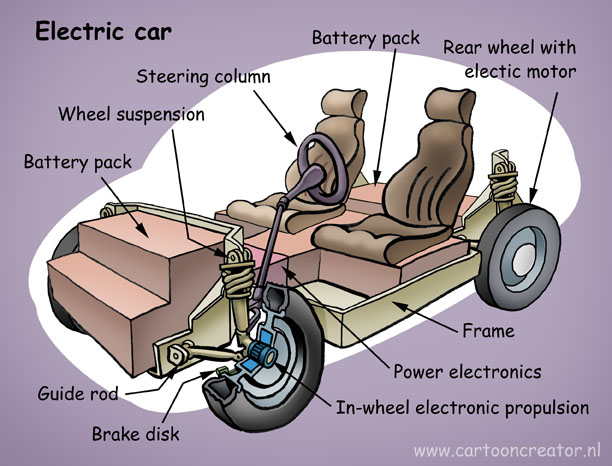Introduction:
The electric vehicle (EV) revolution is steering the automotive industry towards sustainable transportation. Central to this shift is the strategic implementation of lightweight materials in electric cars, aiming to enhance efficiency, extend range, and reduce environmental impact. In this in-depth exploration, we will unravel the multifaceted world of innovative lightweight materials reshaping the landscape of electric mobility.
1. Carbon Fiber Reinforced Polymers (CFRP):
Carbon Fiber Reinforced Polymers (CFRP) stand out as a game-changer in the quest for lightweight electric vehicles. Renowned for their remarkable strength-to-weight ratio, CFRP components are increasingly prevalent in the construction of EVs. From body panels to chassis components, CFRP not only reduces overall vehicle weight but also enhances structural integrity, thus contributing significantly to improved energy efficiency and extended battery range.
2. Aluminum Alloys:
The versatility of aluminum alloys has long been harnessed in automotive design. In the realm of electric vehicles, advanced aluminum alloys are gaining prominence. Employed in structural components, these alloys effectively reduce vehicle weight without compromising safety or durability. The transition to aluminum alloys not only contributes to increased energy efficiency but also facilitates longer journeys on a single battery charge.
3. High-Strength Steel:
Material innovation extends to metallurgy with the advent of high-strength steel. Offering a judicious balance between lightweight properties and robustness, high-strength steel finds applications in various parts of electric cars, including frames and structural elements. The use of this material enhances safety, addressing concerns related to crashworthiness while simultaneously contributing to the overall performance of electric vehicles.
Benefits of Lightweight Materials in Electric Cars:
1. Increased Energy Efficiency:
- Lightweight materials reduce the overall mass of electric vehicles, resulting in lower energy consumption and improved energy efficiency.
- Enhanced efficiency translates to extended battery range, making electric cars more practical for daily use.
2. Performance Enhancement:
- The strategic integration of lightweight materials improves acceleration, handling, and overall performance, providing a dynamic driving experience.
- Reduced weight contributes to a lower moment of inertia, enhancing maneuverability and responsiveness.
3. Extended Battery Life:
- Reduced vehicle weight lessens the strain on electric car batteries, leading to prolonged battery life and increased longevity.
- Enhanced battery life mitigates concerns about battery replacement costs and aligns with the long-term sustainability of electric vehicles.
4. Positive Environmental Impact:
- Lower energy consumption and extended battery life contribute to a reduced environmental footprint, aligning electric vehicles with broader sustainability goals.
- The use of innovative lightweight materials supports the automotive industry’s commitment to eco-friendly transportation solutions.
Conclusion:
In conclusion, the integration of innovative lightweight materials in electric vehicles represents a paradigm shift in automotive engineering. As technology advances, we can expect continuous evolution in material science, further optimizing electric cars for superior efficiency, performance, and sustainability.
FAQs:
Q1: Are lightweight materials more expensive than traditional materials?
A1: While the initial costs of some lightweight materials may be higher, the long-term benefits, including increased energy efficiency and extended battery life, often justify the investment.
Q2: Do lightweight materials compromise the safety of electric cars?
A2: No, advancements in materials science ensure that lightweight materials, when strategically employed, can maintain or even enhance the safety standards of electric vehicles.
Q3: How do lightweight materials contribute to environmental sustainability?
A3: Reduced energy consumption and extended battery life associated with lightweight materials contribute to a lower overall environmental impact, aligning with the sustainability goals of electric vehicles. The long-term benefits in terms of reduced emissions and resource conservation reinforce the positive environmental impact of lightweight materials in the electric car industry.
